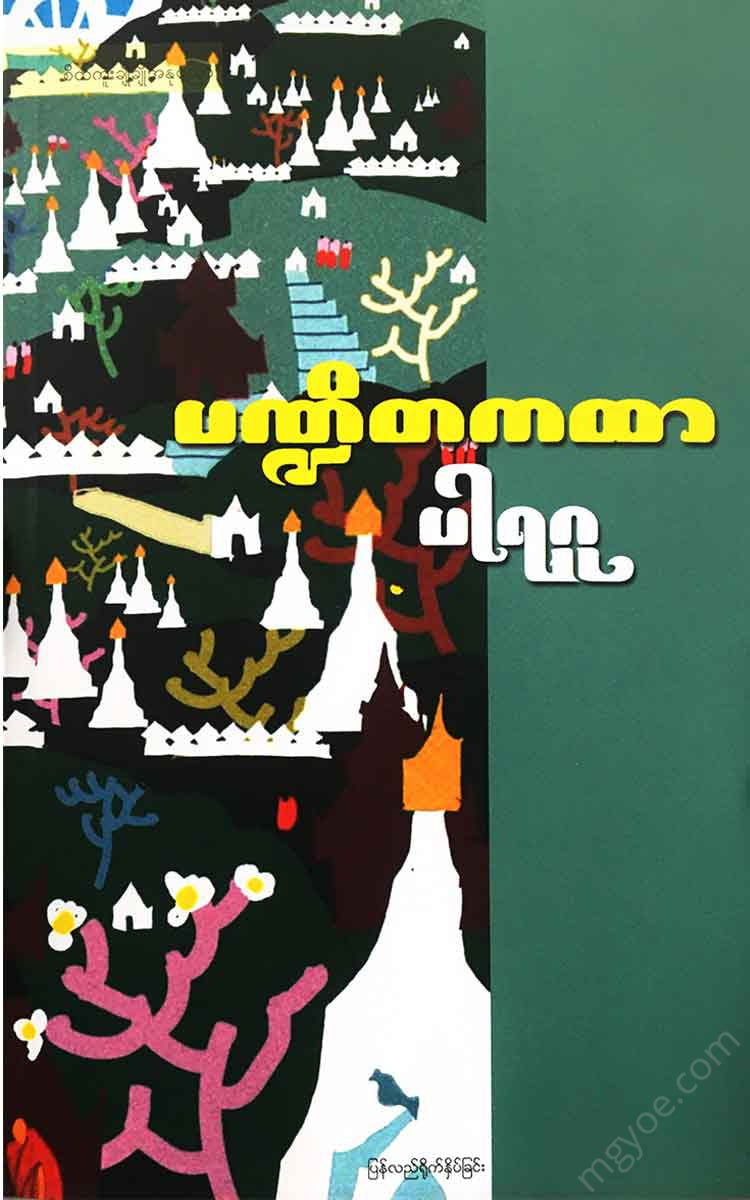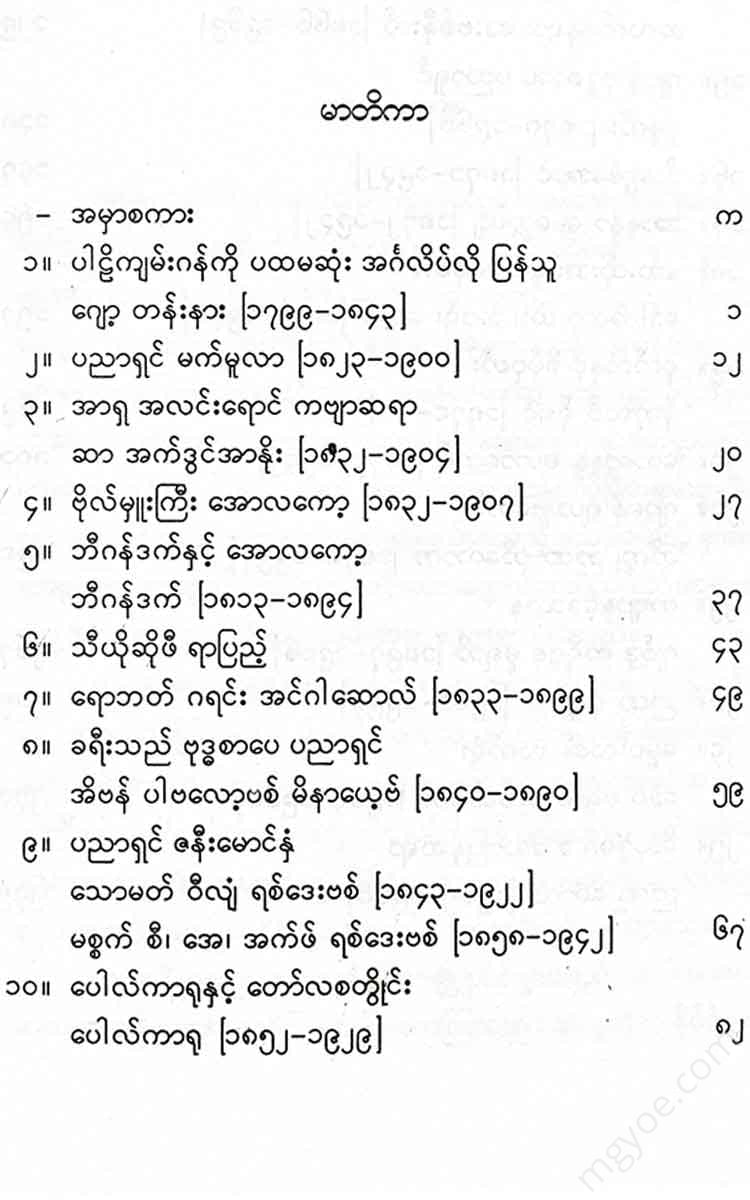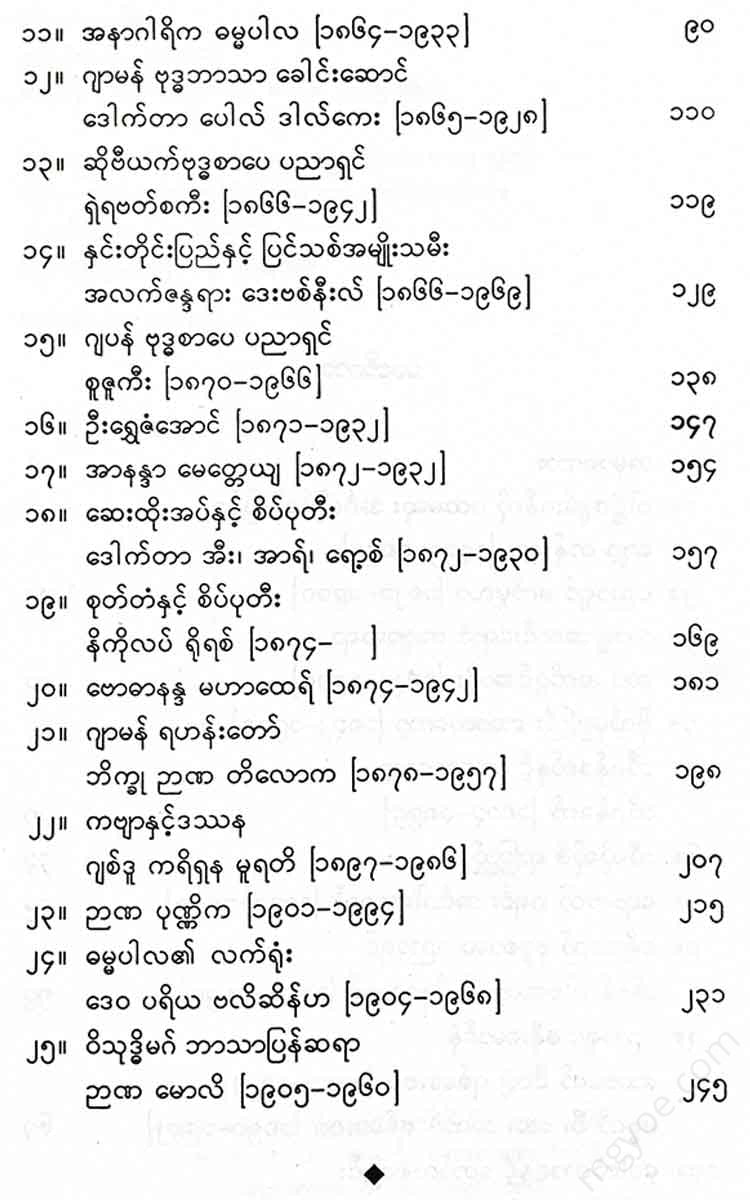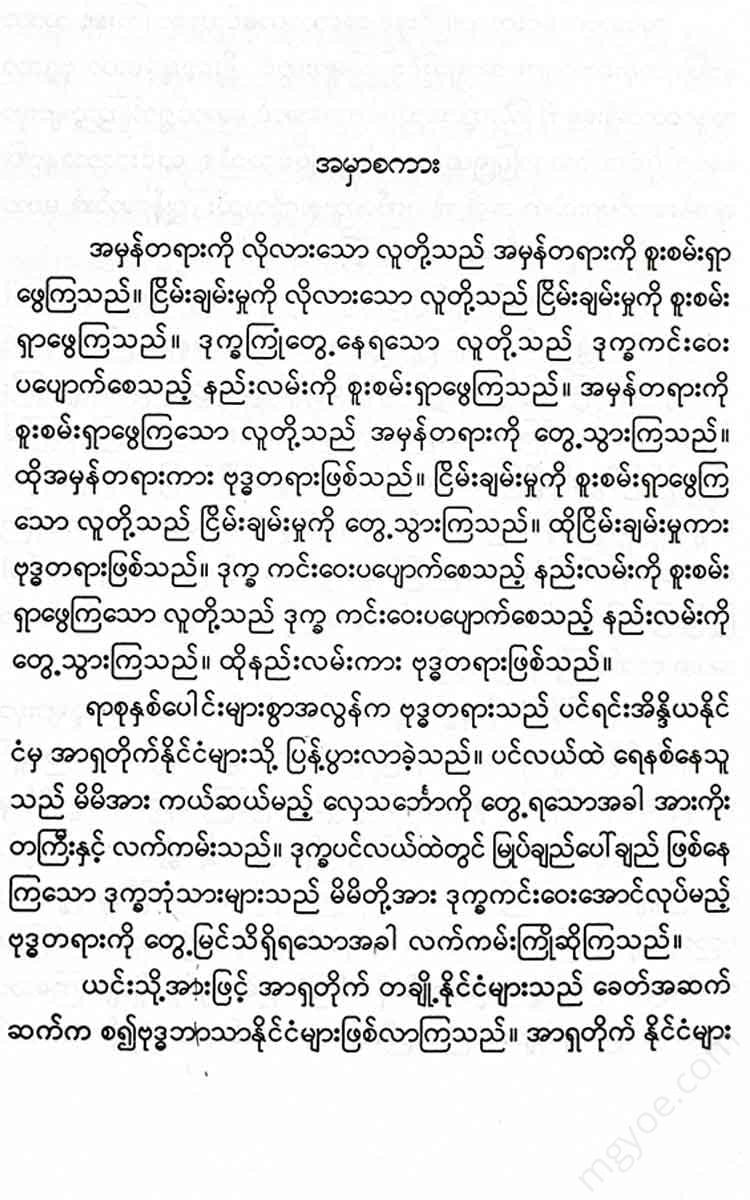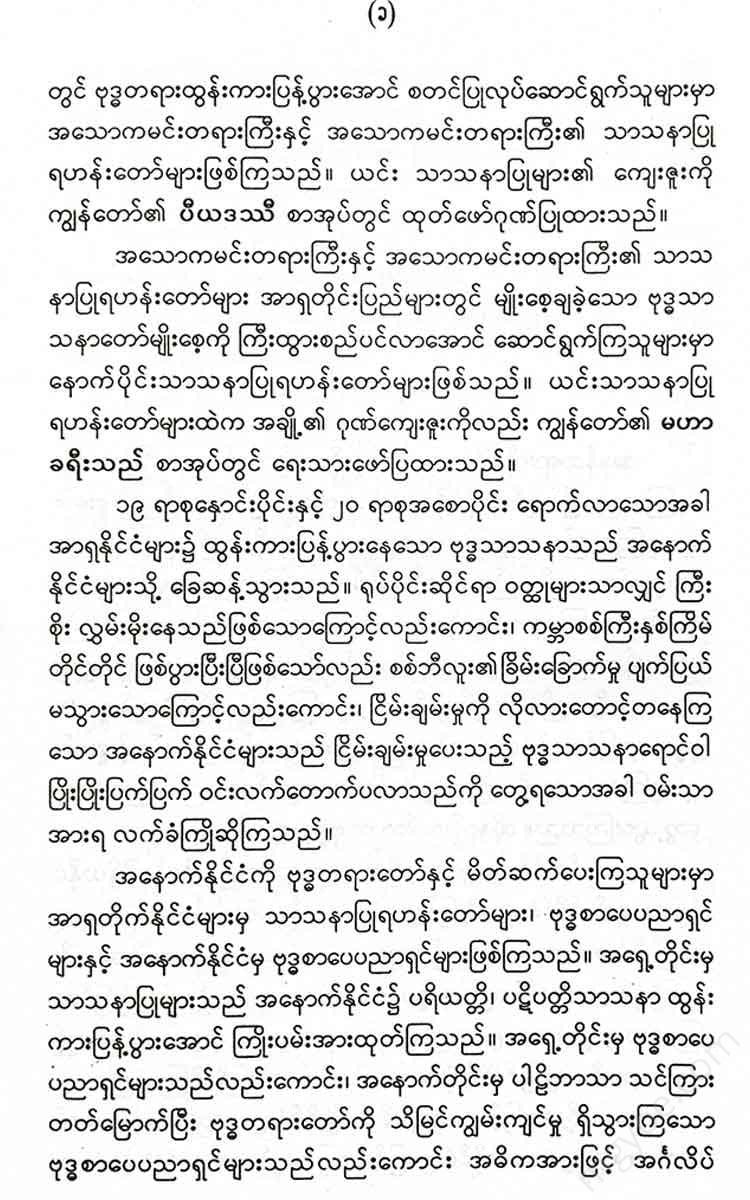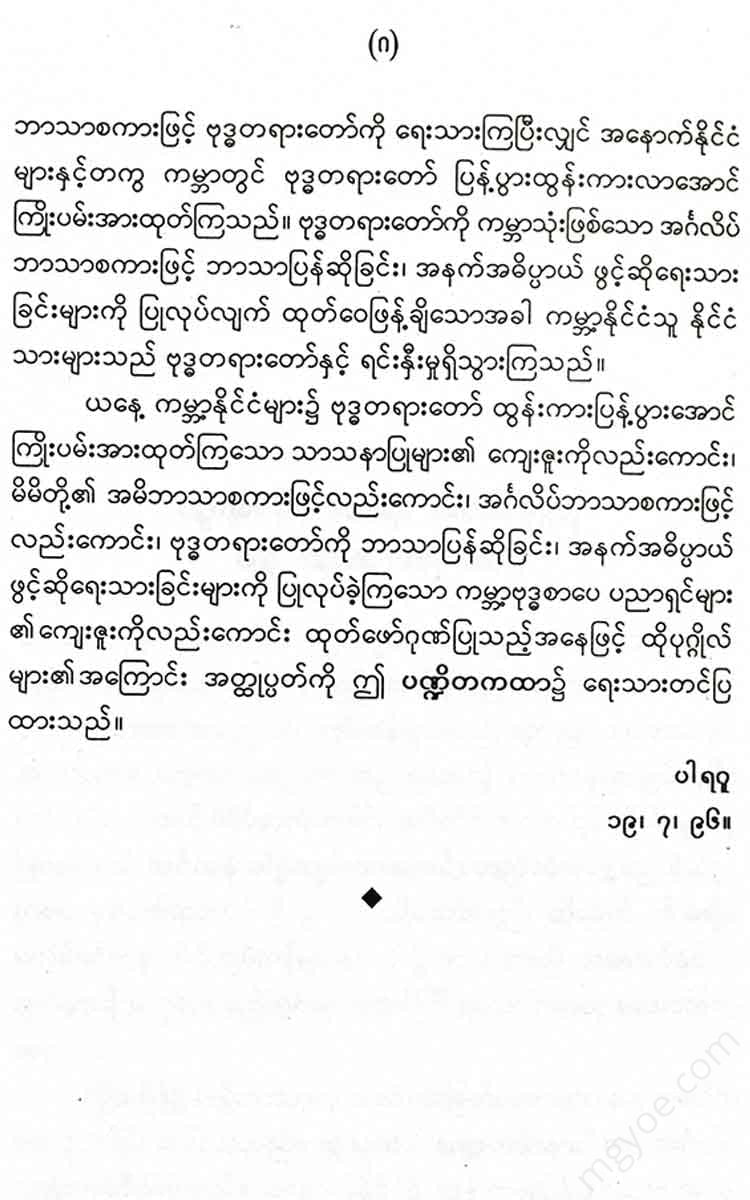စိတ်ကူးချိုချိုစာပေ
Expert - Pandita Katha
Expert - Pandita Katha
Couldn't load pickup availability
The first person to translate the Pali scriptures into English
George Tanna (1799-1843)
In the present day, Buddhism is also flourishing in the West. The Pali scriptures, which are the expounding of the Buddha's teachings, are also the most studied and studied texts by scholars and researchers. The Pali Bible Society of England, which publishes and translates the Pali scriptures into English, was established more than a hundred years ago. However, before that time, the Pali scriptures and the Pali language were not well-known in the West. No one thought of them as worthy of admiration.
At that time, a person appeared who studied the Pali language with great respect. He was an Englishman named George Tanna. If we were to write about the flourishing of Eastern literature and the history of Eastern countries in the West, we would not be able to fail to mention George Tanna at the forefront. George Tanna was Il
1. George Turner
He was a unique pioneer among the British who pursued the study of Eastern literature, which was not well-regarded in the West at that time, with unwavering perseverance, despite various obstacles and difficulties, and rebelled against prejudice and different views.
George Danna's studies of Oriental literature and history, which began with the study of the Pali language, greatly contributed not only to Western studies of these subjects, but also to studies of Eastern countries.
As we all know, Pali is an ancient language similar to Sanskrit. It is the language in which the Theravada Buddhist scriptures were written. About three hundred years before Christ, during the reign of the Buddhist emperor Sri Dhammasoka, the Pitakas, the Buddhist scriptures, were brought to the island of Lanka (Sri Lanka). From that time on, the study of Pali flourished in the monasteries called Sangharamas throughout Ceylon. At that time, Pali became a language used by scholars, just like Latin in the Middle Ages in Europe. At that time, when many commentaries on the Pitakas, the opening chapters, and the eighth chapters of the Pitakas appeared in Ceylon, the pace of Pali study and teaching increased rapidly.
Thus, the pace of Pali language study increased and Pali became the language of scholars, and even religious history and the annals of the ruling kings and emperors were written in Pali. Among the historical books written in Pali at that time, the Dipavamsa and the Mahavamsa are prominent books. These books are high-level Pali epics written in elegant and graceful Pali verses. In addition to these epics, other Pali epics on various topics also appeared. Based on this, it is clear that it is not easy to understand Buddhism and national culture in Lanka without learning Pali.
To assess Jordan's efforts in the field of Pali studies, it is necessary to take a brief look at the state of Pali studies in Ceylon at the beginning of the 19th century. For almost three hundred years, the island was ruled alternately by the Portuguese and the Dutch.
Ceylon (Sri Lanka) then came under British rule in 1796. The last Ceylonese king was deposed in 1815, and the entire country of Ceylon came under British rule. It was about 70 years before the British took over all of Burma. From that time on, the national culture of Ceylon gradually faded away.
When one country rules another, the country under its rule is not very willing to surrender. Those who do not want to lower their flag fight back with all their might. When foreigners first took over Burma, the foreign government could not completely eliminate the Burmese patriots who resisted. Similarly, in Ceylon, the people who did not want to bow their heads took up arms and fought against the foreign government. At that time, the development of arts and crafts was neglected. When they did not succeed in fighting the enemy, they retreated to the safer foothills. In that situation, education was completely neglected. Religion and education began to decline.
Only a few cultural and intellectual leaders are keeping the spark of the literary past alive, which has not yet been completely extinguished. It is true that there are Buddhist monks who are well versed in the Pali scriptures. However, the monks do not know any foreign languages and are therefore not in a position to communicate with the outside world.
At that time, British rule in Ceylon began. The British, who came to Ceylon with administrative duties, did not respect the local religion, literature, and culture because they were superior to them. They believed that the literature that had developed in Ceylon was not worth studying carefully because it consisted of legends, myths, and glorification of the past.
These considerations prevented any European from studying the literature that had developed in Ceylon. If anyone did, it was inevitable that he would be criticized by the public. Amidst these difficulties and obstacles, George Tanana was a remarkable man.
George Tanner, an early British civil servant in Ceylon, despite the obstacles and difficulties that surrounded him, pursued his studies of Pali literature and the ancient history of Lanka and Ceylon without hesitation. The difficulties he faced in his studies were immense. However, these difficulties could not deter his zeal and diligence. His efforts were more successful than he had expected.
If you read the letter about George Tanner, which Sir Emerson included in his book Lankadeepa Ceylon, published in 1859, you can understand the story of George Tanner's life and the difficulties he faced in his early years. Some of the information in the letter is as follows...
“Jordan was the eldest son of the Honourable Jordan, the first Earl of Winchester. His mother, Emily Lee, was a niece of Cardinal Du Bois-Sue. Born in Ceylon in 1799, he was educated in England under the tutelage of Sir Thomas MacMillan, then Governor of Ceylon. He entered the civil service in 1818. He was promoted to the highest civil service rank.
“In addition to fulfilling his duties as a civil servant, he also learned the native Sinhalese and Pali languages to a high degree of proficiency. Pali was a language only known to Buddhist monks, and even among them, there were many who were illiterate. At that time, there were no dictionaries to explain the meaning of Pali words. There were also no teachers who could translate Pali words into English. Therefore, Mr. Tanna had to rely entirely on his native language as an intermediary to translate Pali into English.
"It's not easy for an ordinary person to overcome such difficulties. The people around him don't encourage him. The applause of those people is waiting for him to achieve success."
Tanana's study of Oriental literature was unparalleled in his time. As soon as he had learned and mastered the Pali language, Tanana began translating the Mahavamsa, the history of Lanka and Ceylon, into English.
The tradition of Vamsa literature in the Pali language began even before the time of the Great Buddha Ghosa. This tradition continued until the 19th and 20th centuries. The main Vamsa texts in the Pali language are:
1. This is the meaning.
2. Mahavamsa
3. Sulawesi
4. Buddha Ghosuppatti
5. The Dhamma Sangha
6. Mahabodhivamsa
7. The Great Wall
8. Attanagalu Viharaya
9. The physical body
10. Chemical substance
11. Gandhavamsa
12. They are the Sasana and the Vamanas.
Among them, the Mahavamsa, like the Deepawamsa, is a history of Ceylon. The subject matter of the Mahavamsa is similar to the Deepawamsa, but the Mahavamsa is broader than the Deepawamsa. The style of writing is also more modern. The Mahavamsa is a historical epic. The style of writing found in the world's classical epics is found in the Mahavamsa. It is said that the Mahavamsa was written in the late fifth or early sixth century. There is also a commentary on the Mahavamsa. According to this text, the name of the author of the Mahavamsa was Mahanama Thera.
This great Pali epic, which is of great importance to the history of Ceylon, was translated into English by Tanana. At that time, Tanana was a civil servant in charge of the Sabaragamuwa district and was based in the historic town of Ratanapura, near the summit of Mount Adam. Being a scholar, Tanana was always in the company of Buddhist monks who were experts in Pali literature. It was thanks to these monks that Tanana became proficient in Pali.
While living in Ratanapura, Tanana was fortunate enough to come across a rare copy of the Mahavamsa commentary. With the help of a monk who was a close friend of his, he was able to compile the thirty-eight chapters of the Mahavamsa, covering the period from 543 BC to 304 AD.
